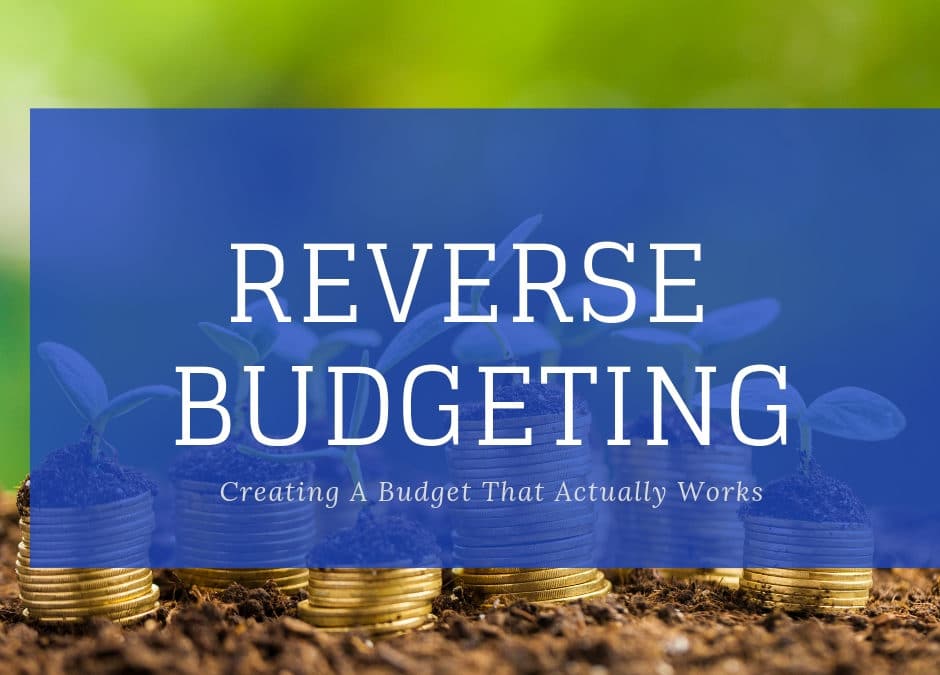Creating a budget and sticking to it is difficult for most people because the process is time consuming and restrictive. Traditional budgeting forces you to make every decision as if you live in a spreadsheet. But guess what? You don’t live in a spreadsheet.
Rather than focusing on expenses, it is better to focus on savings through a process I like to call “reverse budgeting.”
Reverse budgeting simply figures out how much you need to save, makes those savings automatic and then you spend the remaining amount of money as you please.
If you have spent your budgeted amount on restaurants, but something very important comes up unexpectedly that requires you to dine out, then you can shift spending elsewhere to fall in line with your priorities and values.
Because reverse budgeting focuses on saving, you can’t spend what you don’t have.
Increasing the amount you save naturally reduces the amount you spend, but it also forces you to prioritize your expenditures.
This is important because most people find that gradually saving more allows them to cut spending that doesn’t really fit with their values.
Best of all, reverse budgeting requires very little maintenance. A traditional budget requires weekly or monthly reconciliation of financial transactions. Once a reverse budget is set up, the entire thing can be automated.
The lack of ongoing time commitment makes it much more likely you will stick to reverse budget.
Here is how to set up a reverse budget in three easy steps:
1. Add up the amount per month that you need to save to reach your goals short-term goals.
Writing down a goal with an estimated date and expected cost dramatically increases your likelihood for success. It also allows for you to understand the things that are most important to you.
Start by writing short-term goals (five years or fewer), the date of desired completion and the expected cost.
If you add up the expected cost of all your goals, then you can determine how much you need to save on a monthly basis to make this happen. Once this is completed, then number the goals according to your priorities – now you know where to begin directing your monthly savings.
To give you an idea of how this works, below are short-term goals from my Goals Planning Worksheet that a newlywed couple filled out for me in January 2021.
| Priority | Short-term goals (five years or fewer) | Completion Date | Expected Cost |
| 1 | Max out IRAs and Andrew’s 401(k) each year | $31,500 per year | $157,500 |
| 2 | Build emergency fund | July 2026 | $30,000 |
| 3 | Pay off student loans | December 2023 | $15,500 |
| 4 | Save for “big” 5-year anniversary vacation | June 2025 | $12,000 |
5 | Buy Casey a new car | October 2024 | $35,000 |
| Total expected cost over five years |
| $240,000 | |
| Required monthly savings | $4,000 |
Short-term goals change from year to year, so perhaps Casey will get access to a 401(k) when she finishes graduate school. And once they have children, I suspect they will add news goals such as saving for college or finishing their basement.
They are also likely to increase the size of their emergency fund goal to accommodate the higher living expenses that successful professionals inevitably take on.
Once your short-term goals are in place, do the same exercise for intermediate-term goals (five to 15 years) as well as long-term goals (15 years or more).
It may be difficult to assign an expected cost to your long-term goals, but that’s OK, the benefit of this exercise is thinking about it.
If you can’t meet the monthly savings required to meet your short-term goals, then you can try to escalate your savings over time (see step three), but it also probably means that you need to evaluate what is most important to you and adjust your goals accordingly.
2. Set up a monthly automatic withdrawal from your checking account to a separate savings account.
Automating your finances is the easiest way to maintain your reverse budget.
Start by opening an online savings account that pays a little higher interest rate than a traditional brick and mortar bank. In addition, online savings accounts serve as a barrier to impulsive spending since the money takes more time to access.
Next, set up an automatic monthly withdrawal from your checking account to the online savings account to meet the amount you reverse budgeted in step one.
Then you are done – simply spend the leftover money in your checking account as you see fit.
3. Escalate your automatic savings over time.
This step is really powerful for both people wanting to supercharge their savings as well as those that can’t save the required monthly amount to meet their short-term goals.
Let’s return to our short-term goals example from step one. That example requires a 20% savings rate for someone with a $240,000 income. For someone that hasn’t been saving much prior to this exercise, removing $4,000 per month from their lifestyle can be challenging.
Escalating your savings is a way to slowly advance towards your ideal monthly savings.
Start by setting up several automatic withdrawals from your checking and deposit into your online savings account.
The first three months should withdraw $100 per month. The second set should withdraw $150 in the next three months, then $200 in the next, and so on.
If you are already meeting your short-term monthly savings target, then escalating savings over time is a great way to begin addressing those intermediate- and long-term goals.
Next Steps…
Reverse budgeting is just one strategy to build your wealth. If you want more simple systems you can use in your finances here are a few more options:
- Take my financial assessment and discover where your biggest opportunities are in your finances with just 9 questions.
- Review my free online resources for other helpful financial guidance like: setting financial goals, deciding if you should rent or buy a house or finding out your net worth.
- If you are ready for professional help to help you manage your finances, consider booking a free 15-minute discovery call with me.
…
RESOURCE: Do you want to make smart decisions with your money? Discover your biggest opportunities in just 9 questions with my Financial Wellness Assessment.
















What are some ideal online savings accounts you would recommend. I have been keeping my money in brick and mortar banks over the years. Thanks for your time.
I can’t make such recommendations in this forum for compliance reasons, but happy to chat if you find the information on my Work With Me page of interest. Thanks for reading!
Great article! I finally have a name to what my wife and I have been doing since 2004.
Hi Eric – I’m glad to help name the great system you have in place.